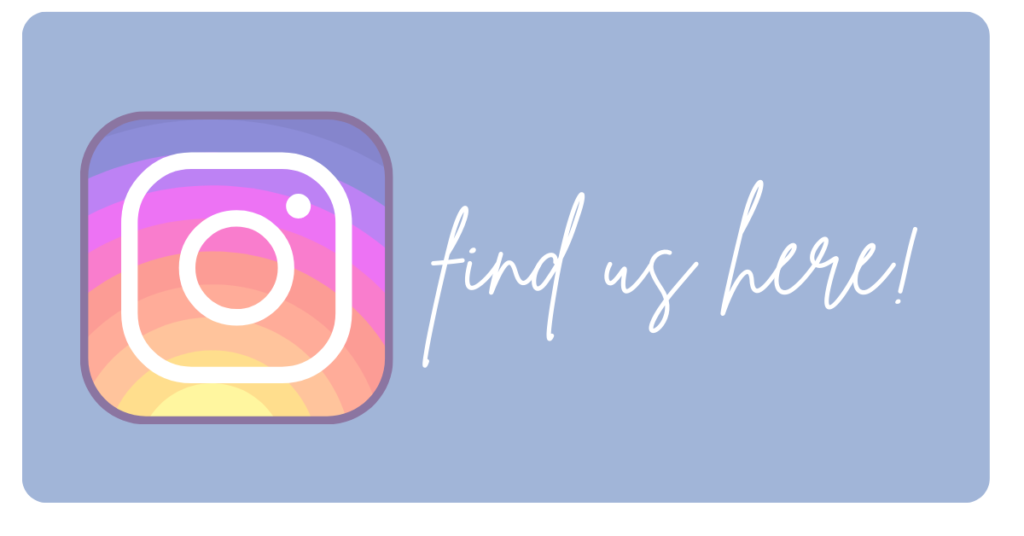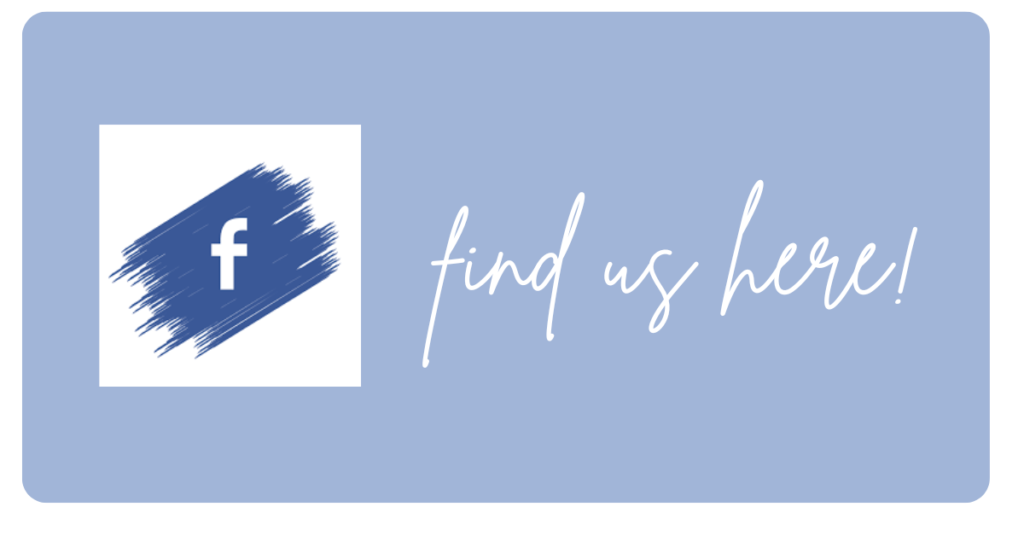Mental Health Trends for 2025
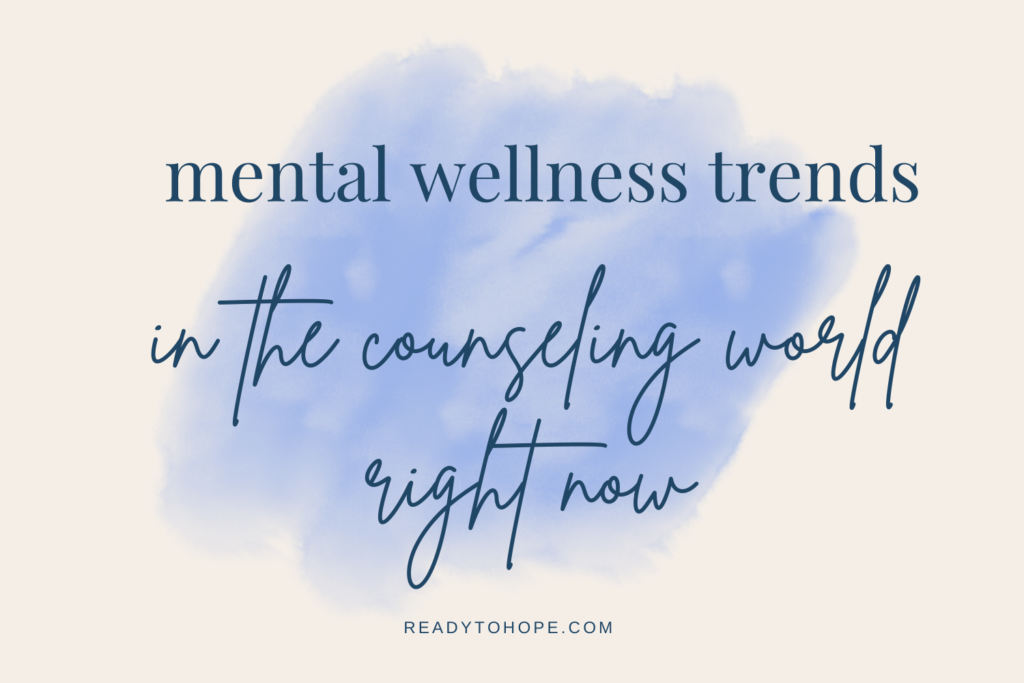
Last week we talked a bit about the current state of mental health for young adults.
This week we want to look at the current trends that are addressing these needs.
Hint: We are going to focus on what’s good!
With that as a lead-in, let’s not waste any time and get to some positive news.
De-stigmatization
Yes, it’s a word. (I mean, Google didn’t highlight it. So it’s a word and we’re going to run with it, because it’s a word that needs to be said. A lot.)
We are talking more about mental health as a society, which is only a good thing. Celebrities and influencers are talking more about their mental health journeys
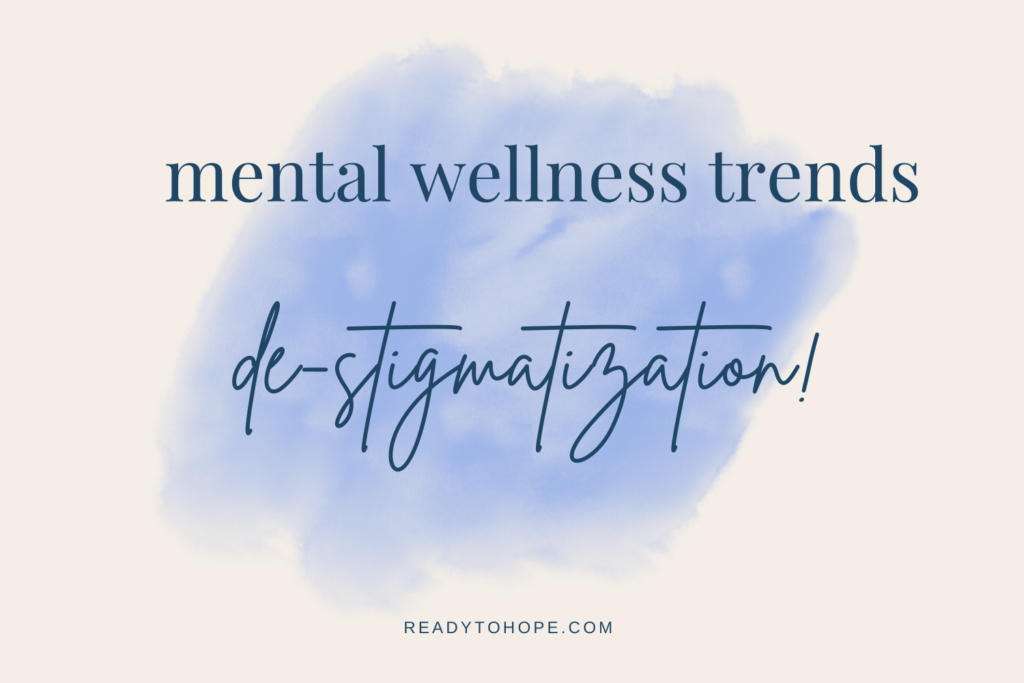
The best part about these conversations: more and more people are standing up and saying, “this is what I am dealing with,” which is exactly our mission at Ready to Hope.
The more that you know others are dealing with something, the more your “something” feels okay to talk about. Because it is!
Teletherapy
Another new-ish word, and another word that speaks magic into the mental health movement.
I’ll be honest: on both sides of the screen (no longer the couch, but the screen), both as counselor and counsel-ee, I have been shocked at how truly meaningful the connection can be! Whatever the negatives may have been surrounding covid, our comfort talking to one another through our computer is certainly a positive when it comes to counseling access.
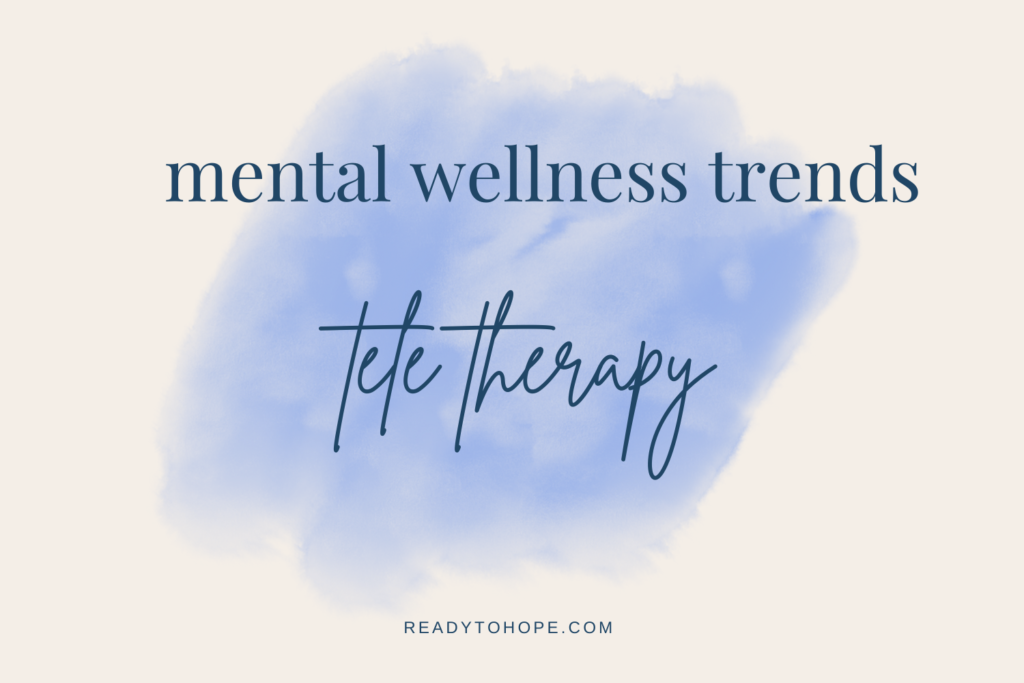
While there are still plenty of counselors doing in-person work, teletherapy makes counseling even more accessible for even more people. And that’s a good thing!
Mental Health Apps
Okay so maybe health apps aren’t new- I know I’ve had some of my fitness apps since apps became a thing- but mental health apps are growing rapidly!
From meditation to stress management to mood tracking and beyond, you can now have resources and tools literally at your fingertips.
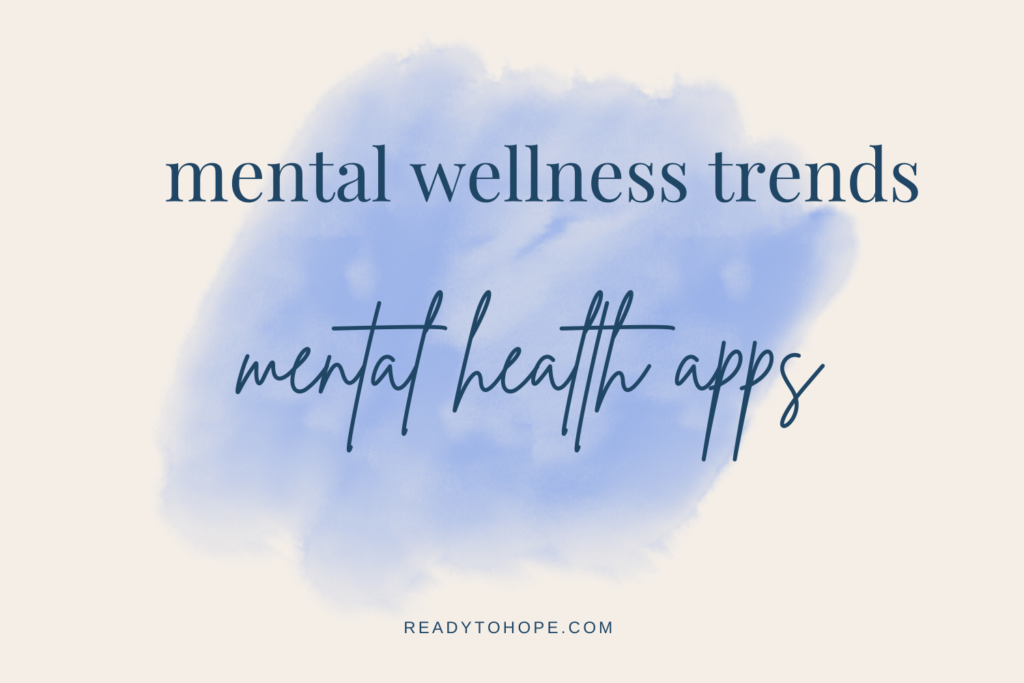
While an app will never take the place of human connection, they can be a great addition to self-care where your mental health is concerned!
Dual Diagnosis Treatment with Substance Use
This may seem like a double negative, but it truly is a positive trend.
There are more and more facilities and practitioners who are willing to work both with substance abuse issues and mental health, at the same time- meaning, more well-rounded support, which means treatment becomes that much more effective!
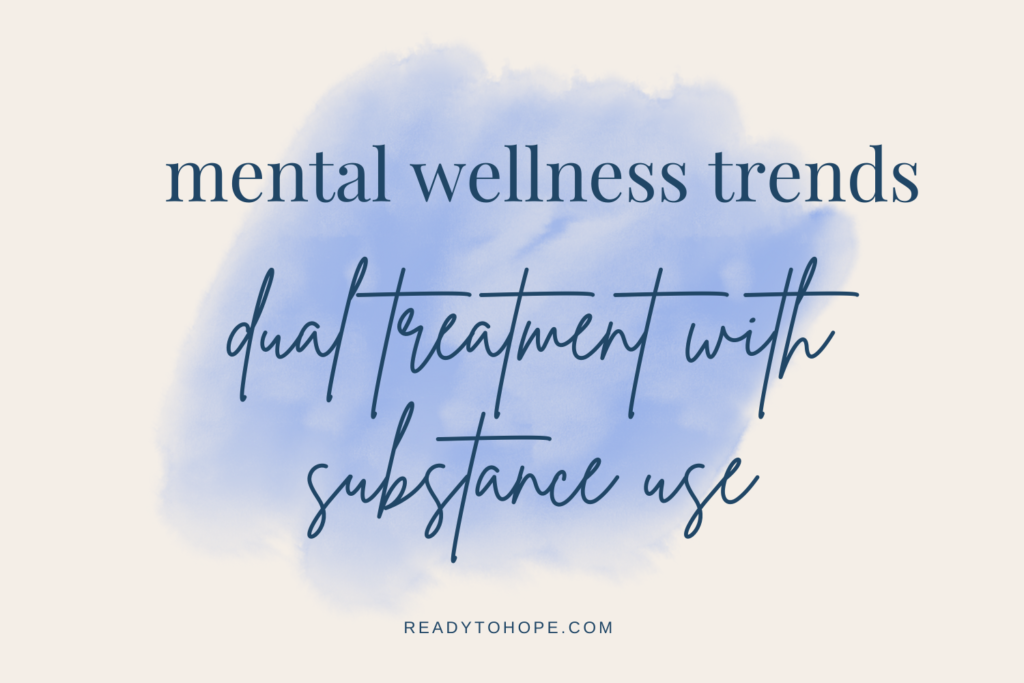
Intersectional Mental Health Treatment
Much like the concept of working with a diagnosis like depression or anxiety alongside working on substance use, the concept of intersectional mental health treatment simply means honoring that an individual may have situational concerns.
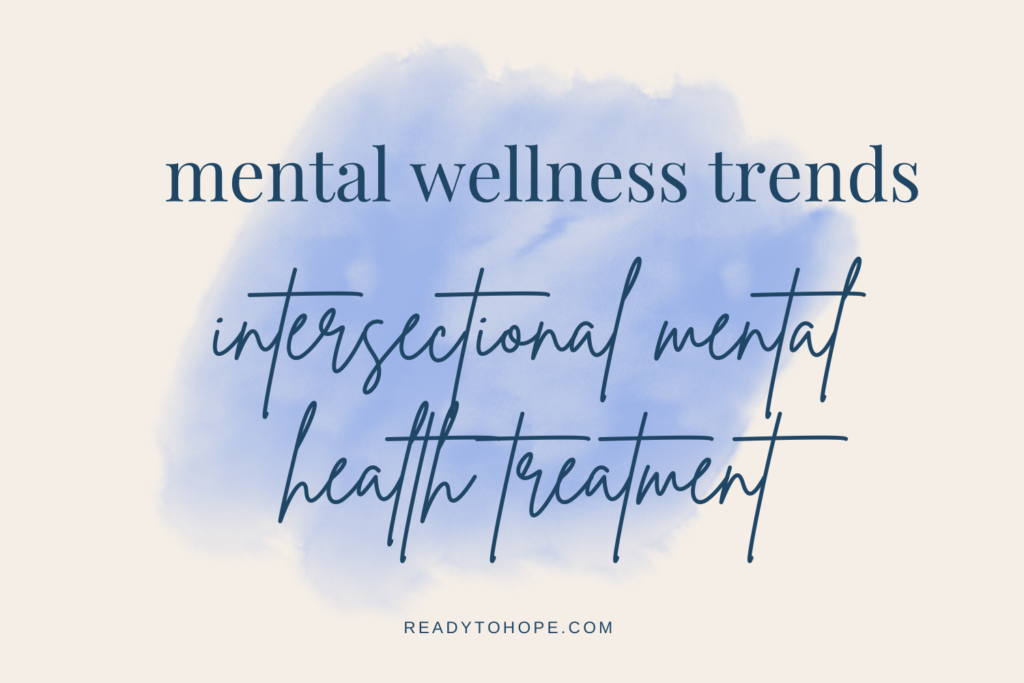
What that means is that more and more, the mental health community is striving to honor and address things like cultural sensitivity, past and present trauma, gender-specific concerns, and more, while doing the good work of counseling and therapy.
Youth-Focused Mental Health Initiatives
There are so many movements going on right now that address young people, from elementary school all the way through young adulthood.
Social media is one area, as we become more mindful of how platforms like Instagram, TikTok, and Snapchat are linked to anxiety, depression, and self-esteem issues, especially among teens.
Schools are incorporating mental health education into curricula to address rising concerns about student well-being.
And finally, digital detox movements, where an increasing awareness of the negative impacts of constant connectivity has led to trends promoting screen-free time.
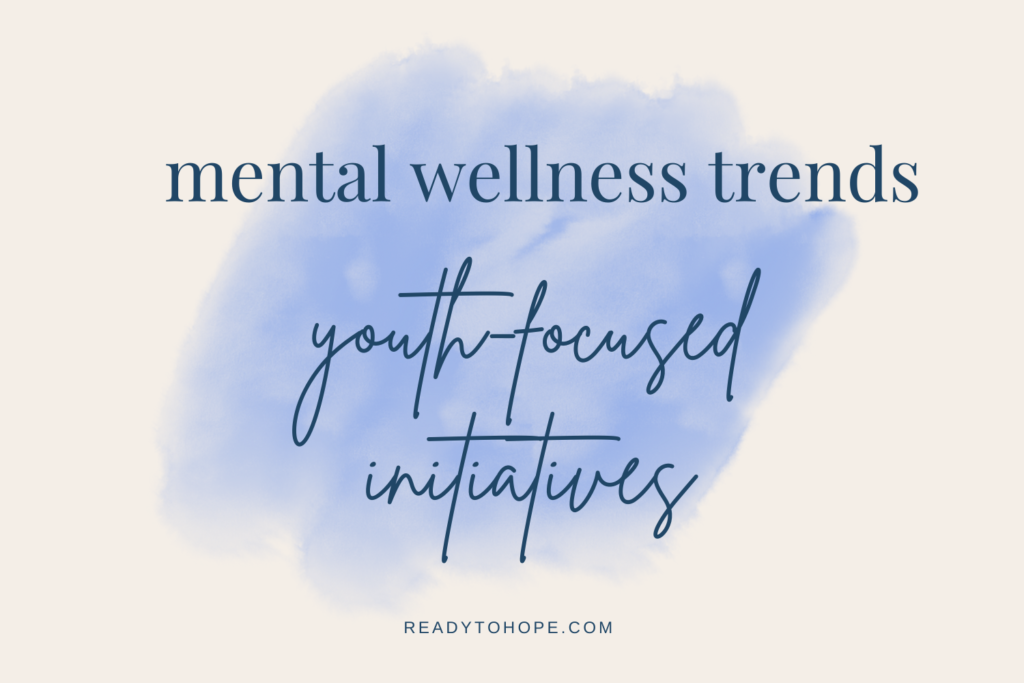
There is a lot to be optimistic about when it comes to how the mental health community is striving to support young people.
Yes, there is a lot of work to be done- maybe now more than ever before.
But we wanted to share these trends because we believe that it is so important to focus on the positive.
There are more and more conversations happening, more and more services being offered, and more and more young people realizing this: you are not alone. This mental health thing is for everyone.
And we are excited and proud to be part of this movement.
Next week, we will explore what to expect at a Ready to Hope workshop- our little contribution to the bigger movement to support all young people.


